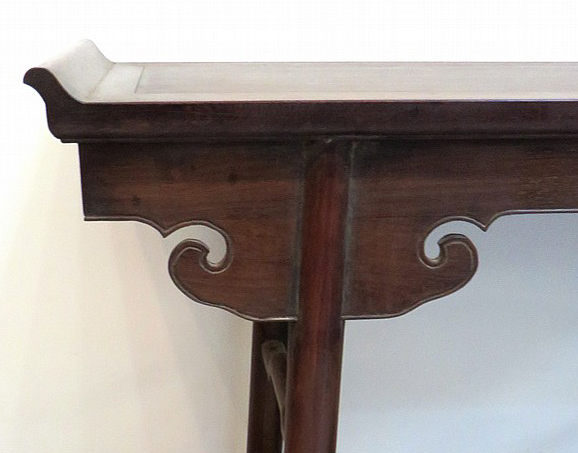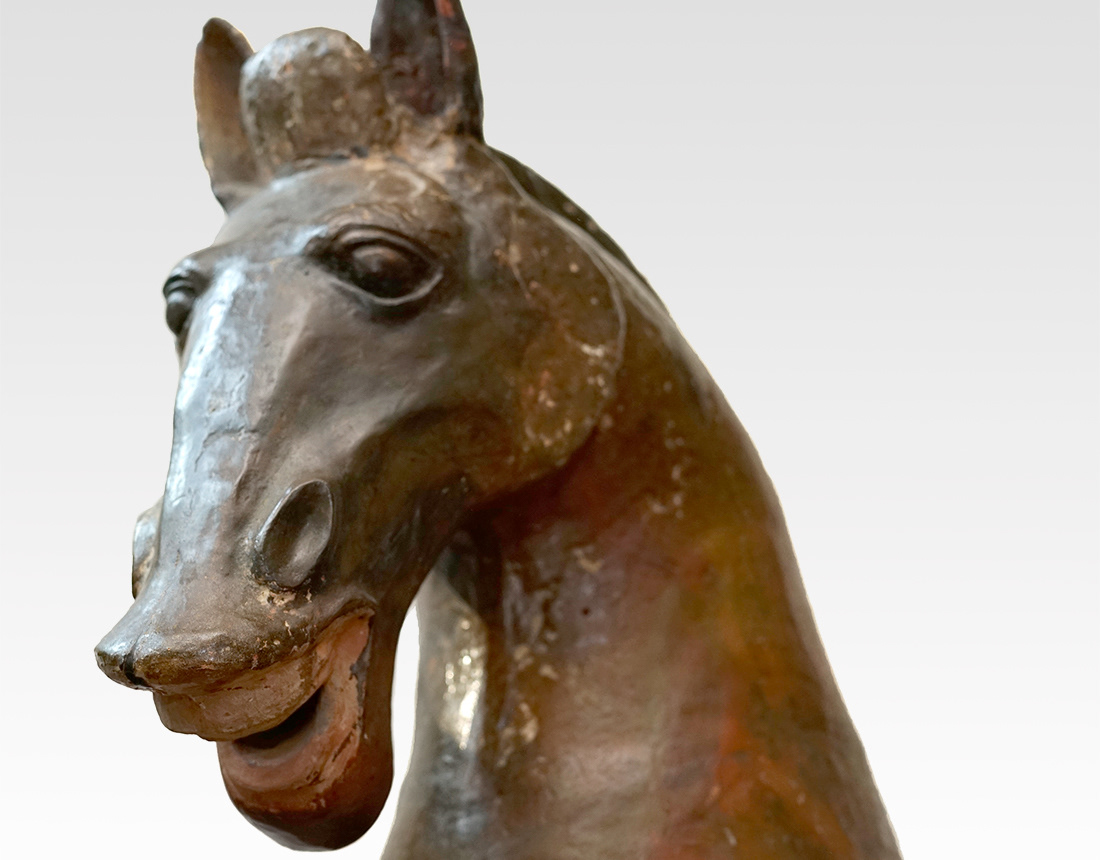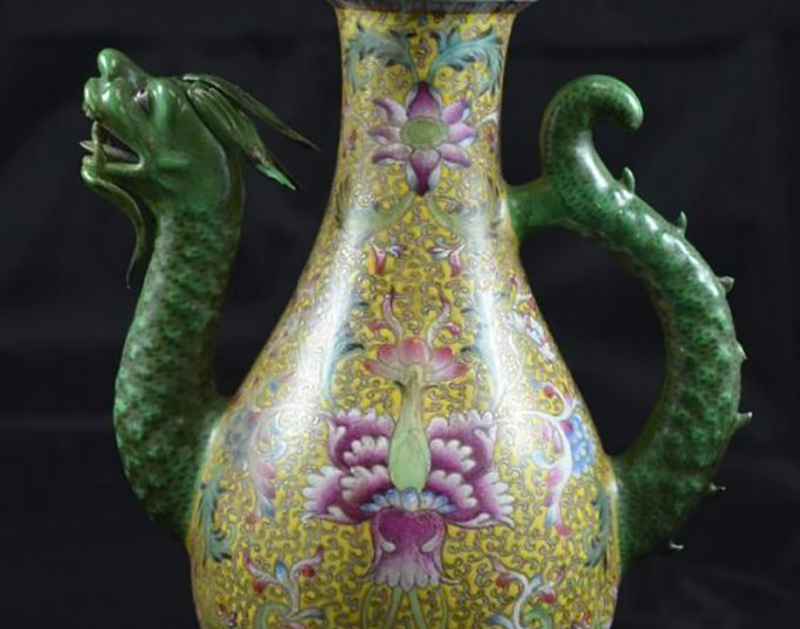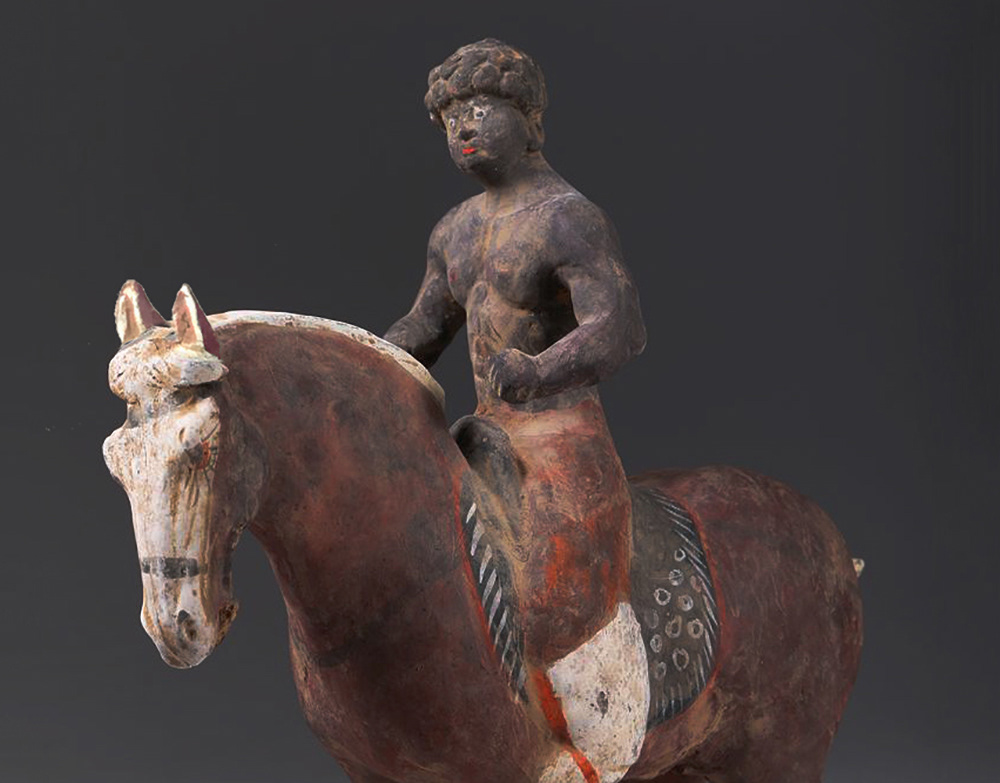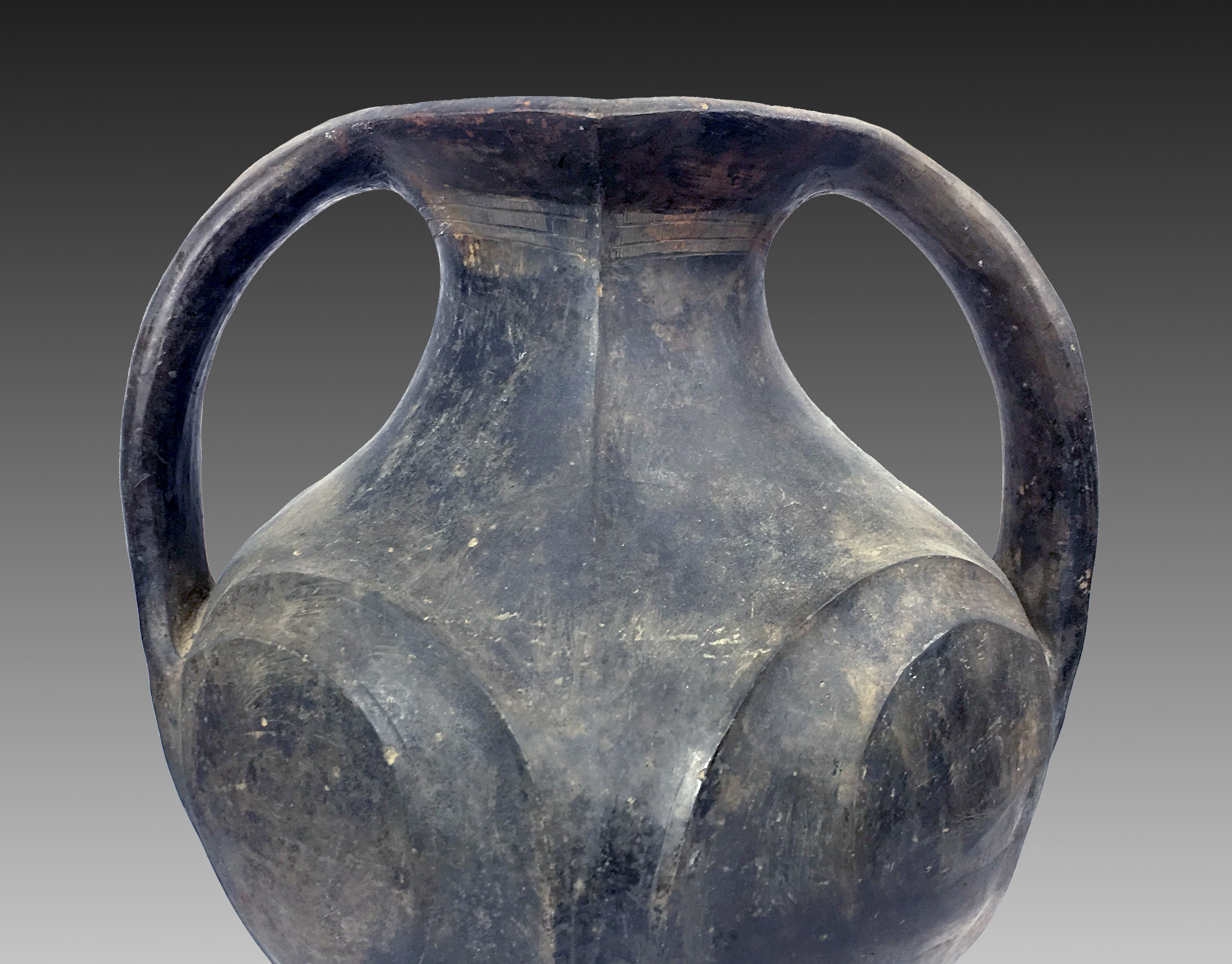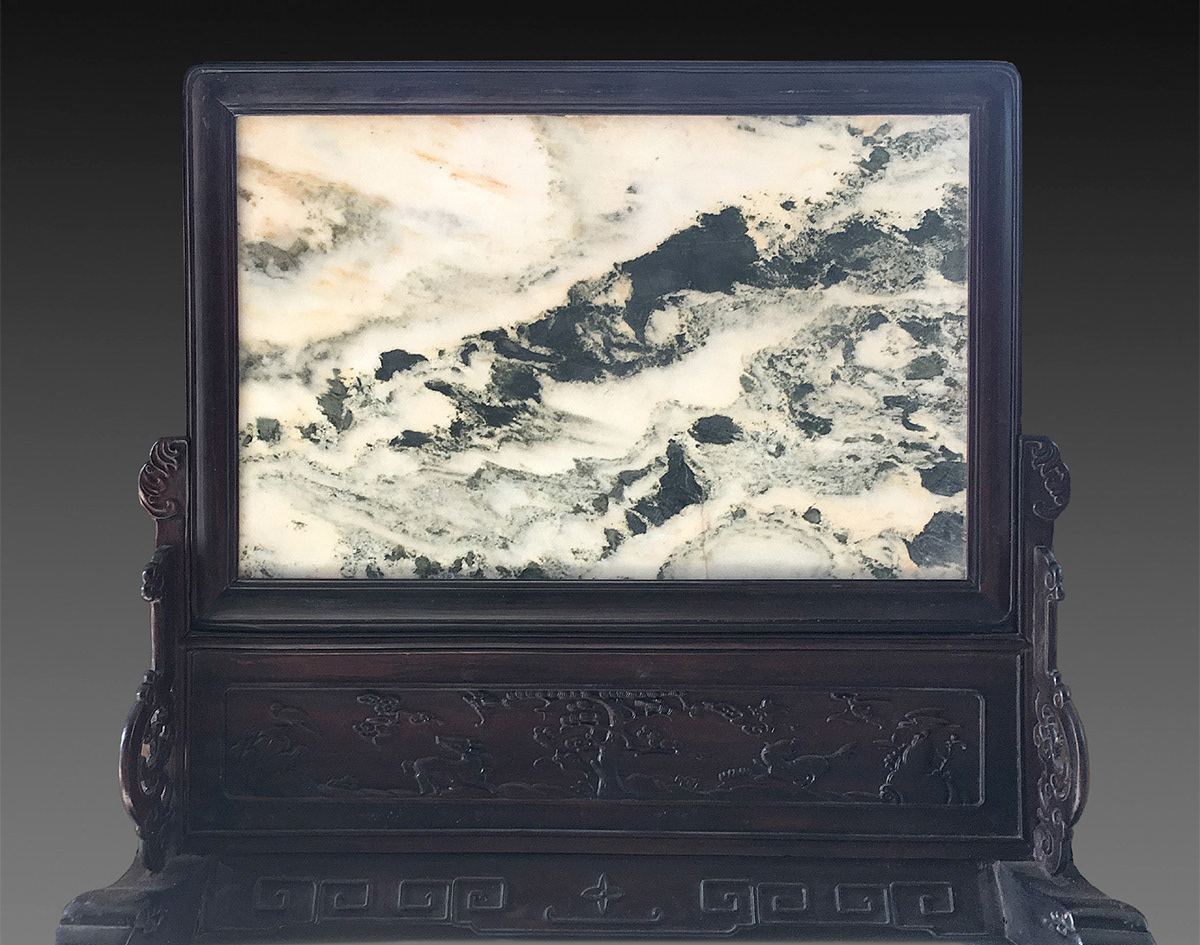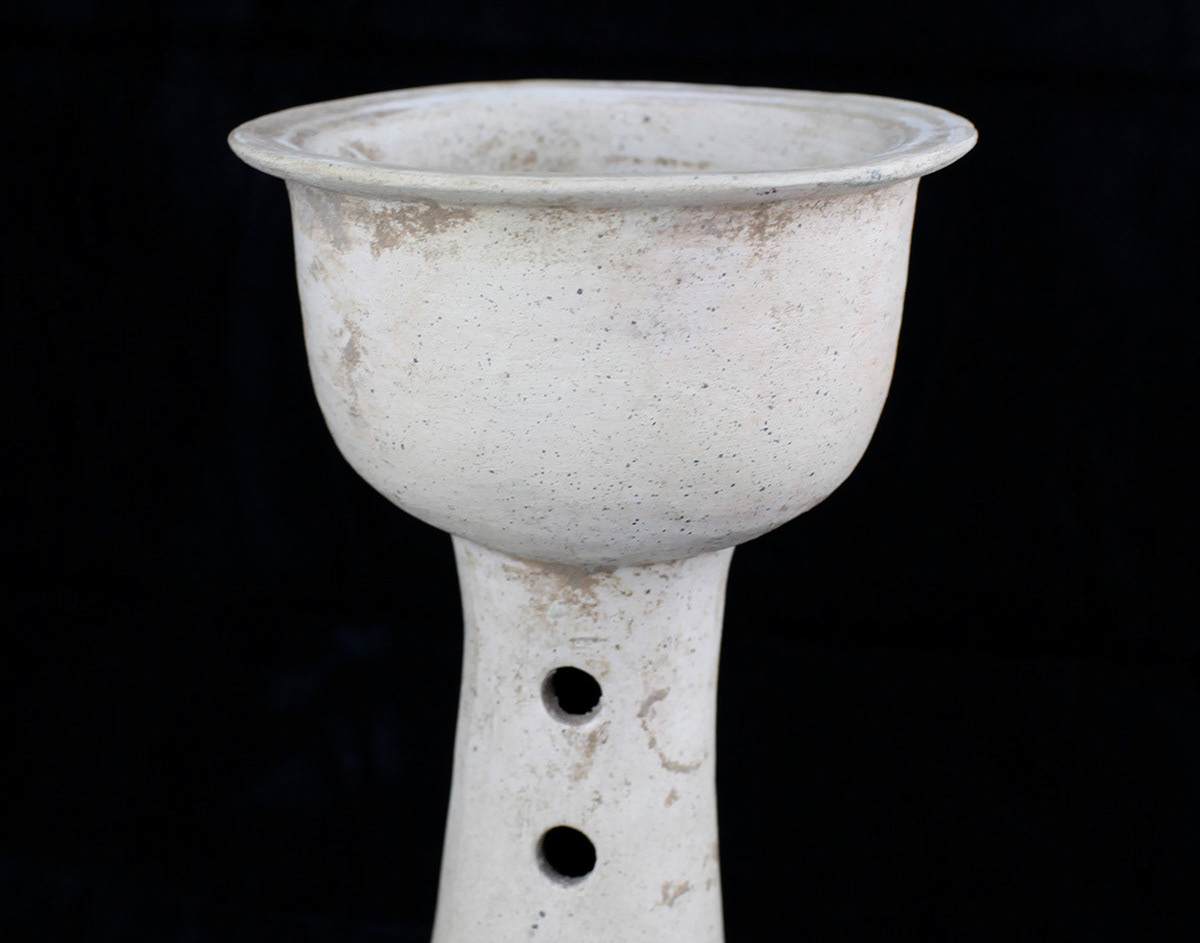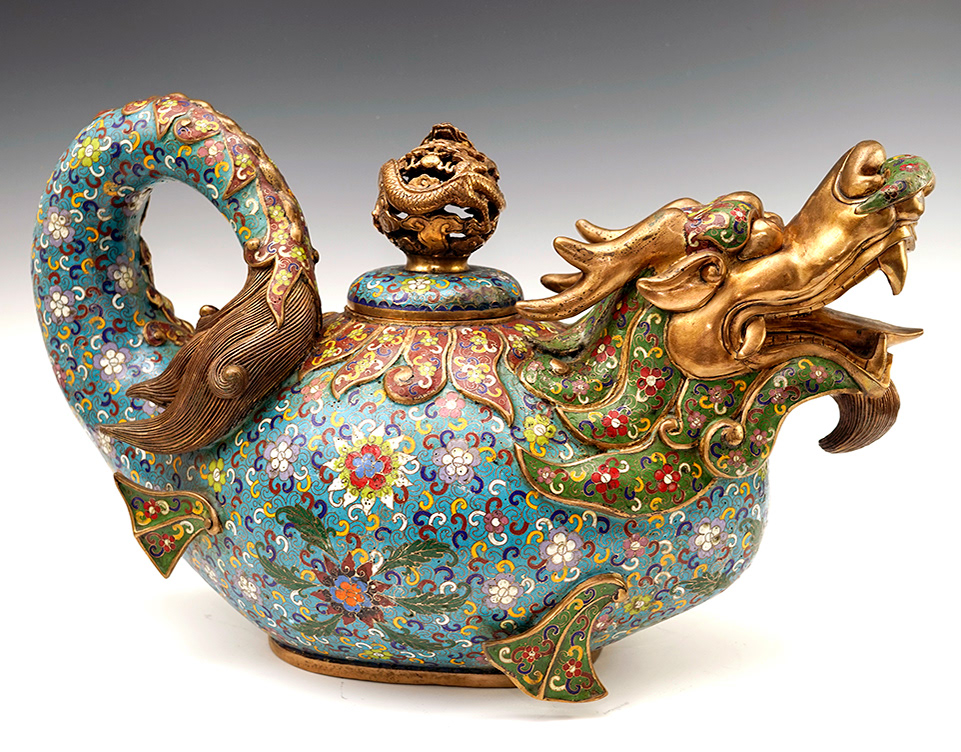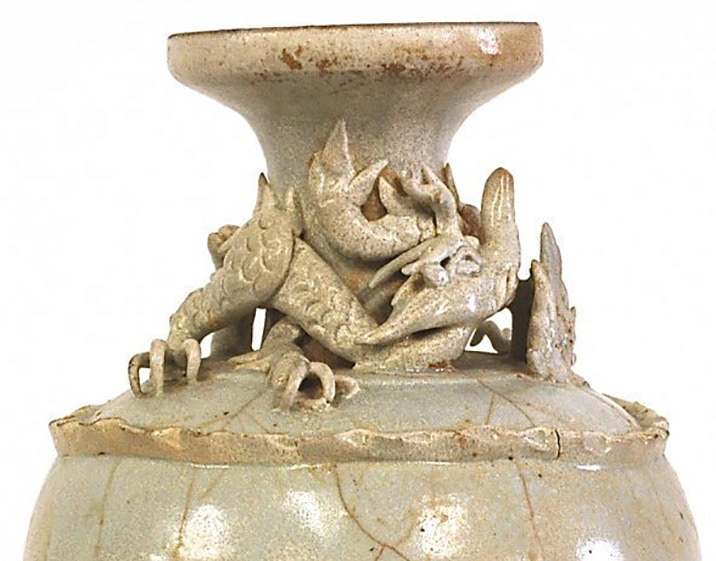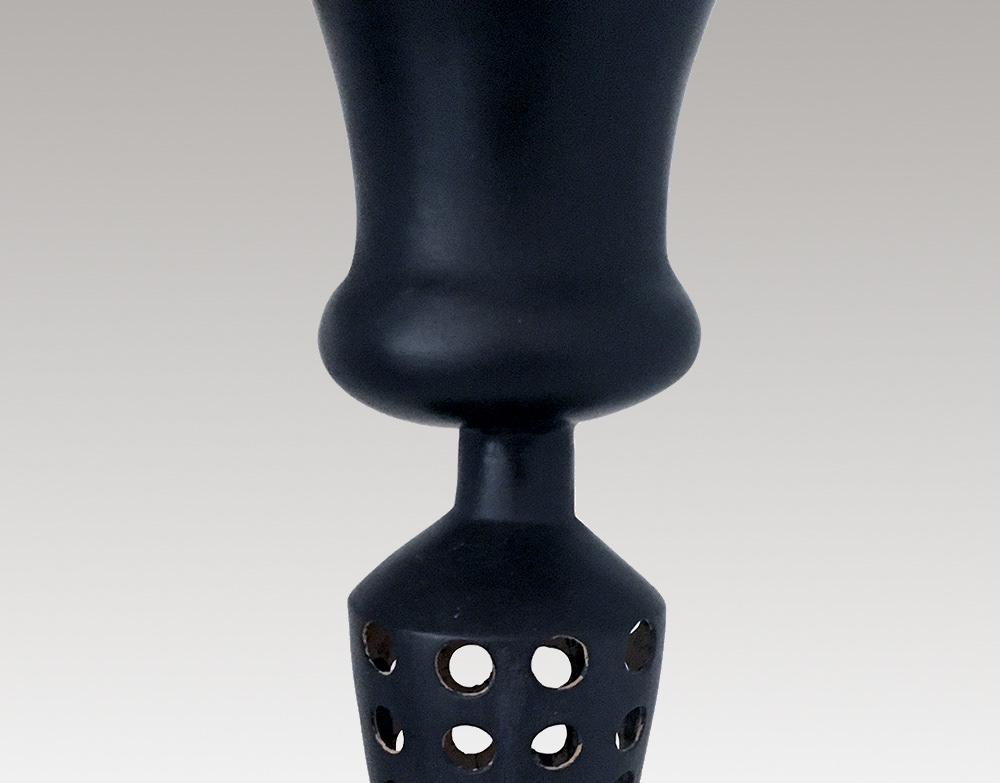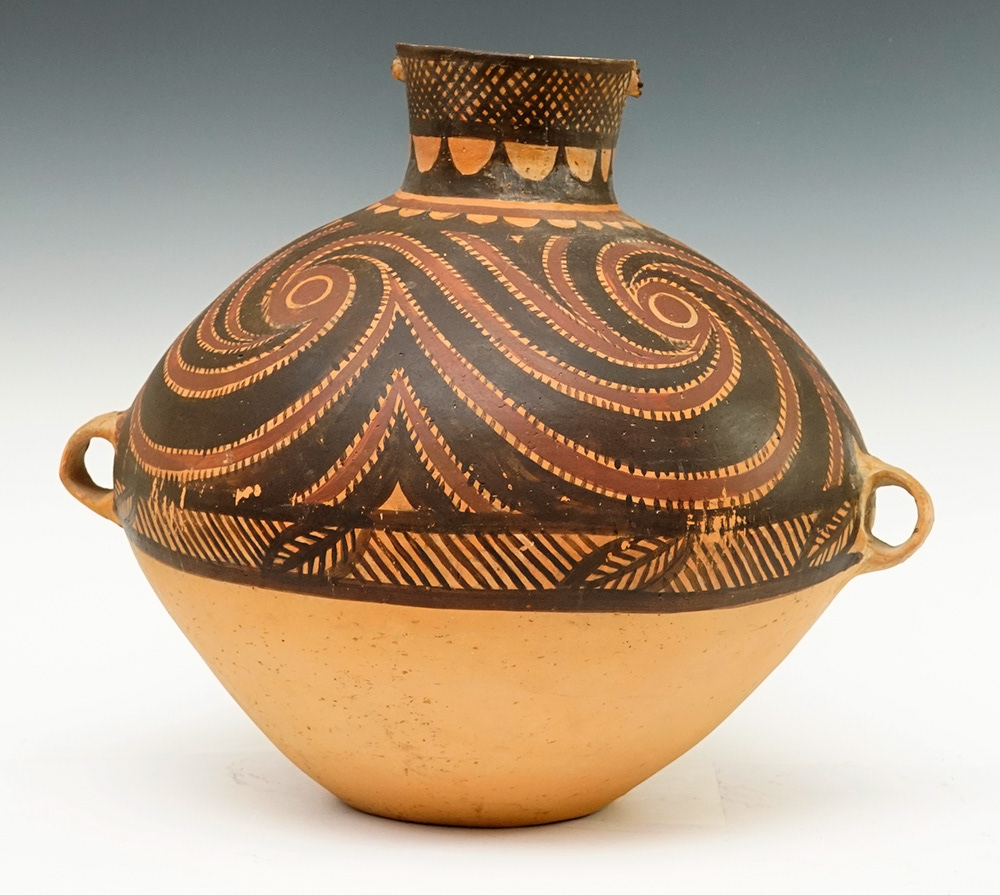

NEOLITHIC PERIOD, MAJIAYAO CULTURE, BANSHAN PHASE, CA. 2600 – 2300 B.C. Majiayao phase pottery typically has a red-buff earthenware body with a smoothed surface often finished with black painted decoration, including complicated running-spiral designs with two to four arms. Majiayao pots vary greatly in shape, ranging from bowls to jars with tall necks. The Banshan phase has a narrower range of pottery shapes and designs. Its large earthenware pots and urns often have designs in black and maroon-red paint on their shoulders. This use of two colors is a chief distinction between Banshan and Majiayao painted pottery. Earthenware with painted decoration 14 x 17.5 in. (35.56 x 44.45 cm.) SOLD

